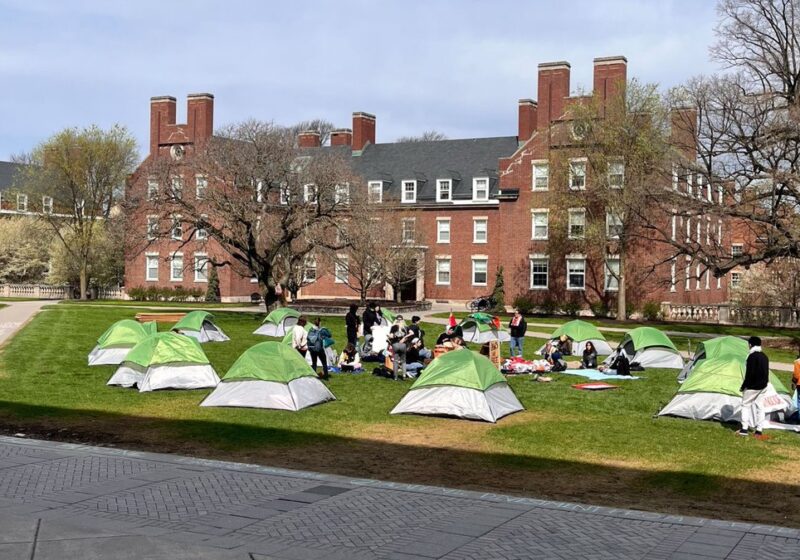The Buffalo-Rochester Sabres take on the Carolina Hurricanes tonight at the Blue Cross Arena.
As recently as last year the above sentence may have looked like the Frankenstein’s monster of some die-hard Rochester Sabre fan, but recent events in the sporting world may make wishes come true. With the purchase of the Sabres organization by Rochester moneybags Tom Golisano several months ago, the formerly exclusive residents of Buffalo’s HSBC Arena have been expanding eastward into Monroe County and the hearts of Rochester sports fans. In addition to hosting training camp in Rochester, the Sabres have scheduled several NHL games in the Blue Cross Arena in downtown Rochester including a Nov. 12 match-up against the defending Stanley Cup Champion New Jersey Devils. The games – the first ever NHL games played in Rochester – are not only exciting to Rochester residents, but are tangible realities of a larger phenomenon sweeping the sporting world – sports regionalism.
Regionalism, the efforts of a professional sports organization to expand its fan base beyond the city limits of its hometown, is far from new. Billy Sullivan realized in 1980 that by renaming his Boston Patriots the New England Patriots, he would create a sentimental attachment stretching far beyond the T-Line and could incorporate football starved fans from Maine to Connecticut into the fold. He also, and most importantly, significantly increased merchandise revenue and television contracts. Today some of the most rabid Pat fans live not in Boston but in Providence, R.I. or Hartford, Conn. or Manchester, N.H. Since that noble experiment, team owners and administrators have realized that by opening their arms wide to the larger geographical masses they make more money and invite those who don’t live in a major metropolitan area “into the club.”
Tapping into the enthusiasm of small markets that fervently support their minor league teams, major league clubs are continuing to embrace regionalism. Franchises today are often not awarded to cities but entire states – to wit the Arizona Diamondbacks, the Carolina Hurricanes or the Minnesota Wild. The Hurricanes, who play home games in Raleigh, N.C, enjoy support from hurricane-tattered Cape Hatteras to the less wind-swept Appalachian Asheville.
Western New York has historically been on the avant-garde of sports regionalism, notably with the success of the Buffalo Bills. Throughout their history the Bills have fostered support for the team outside of Erie County, reaching as far east as Syracuse. Most agree that the team’s fanbase consists more of Western New York than merely Buffalo. The Bills hold training camp at St. John Fisher College in Pittsford, which helps cement its fan base. Other teams have attempted to follow Buffalo’s footsteps, such as the New Orleans Saints, which aspire to become a team representative of not only the Big Easy but the entire Gulf Coast while the Seattle Seahawks battle for the hearts and souls of the Pacific Northwest.
The Buffalo Sabres, financially strapped and anchored near the bottom of the NHL standings, are not new to the regionalism bandwagon. Students may have seen RTS buses “shrink-wrapped” with bus-enveloping Sabre ads and as the home of its AHL affiliate – the Rochester Americans – Rochester has always been conscious of the Sabres.
The Sabres, however, received a shot in the arm with the arrival of Tom Golisano and integration between the communities of Buffalo and Rochester in the hockey world is proceeding faster than even optimists could have imagined. Speaking about the Sabres, Golisano commented that “One of my goals when purchasing the Sabres was to make this a regional team. Bringing the NHL to Rochester for these games demonstrates our commitment to that goal. I am very excited about bringing the NHL to my home town and hope it will be a memorable season for Rochester sports fans.”
So influenced by the Bills were Golisano’s Sabres that they are even following the same basic “blueprint” for introducing Sabres hockey into the Flower City. “I’ve watched how the Buffalo Bills have done a tremendous job becoming part of the marketplace here,” Golisano continued. “When they move their training camp to the St. John Fisher College campus, it really heightened awareness and interest in the Buffalo Bills.”
Golisano is taking a big gamble with his team’s field trip to Rochester. In addition to losing about 7,000 seats the Sabres will also lose concessions income – a financial loss close to $500,000.
Golisano is betting that in the long run, regionalism will pay off and that his efforts will whip up enthusiasm in Rochester for the Sabres. If he plays his cards right, when Lord Stanley comes to town, the welcome will span all of Western New York.
Schloss can be reached at aschloss@campustimes.org.

